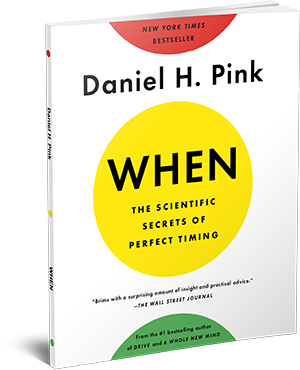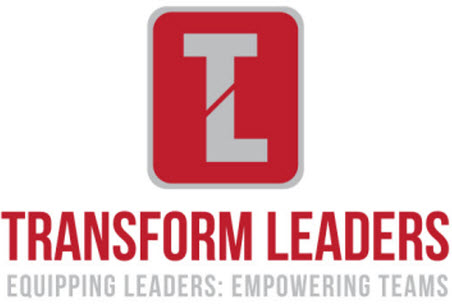
A while ago I read Daniel Pink’s book, When. It is all about timing. In this disrupted period of time it is helpful to consider using insights that come from research.
There are two types of ‘timing’:
- Managing our time and energy – how we use our time, energy, to ensure productivity and motivation remain at the optimum levels.
- Decision-making timing – Getting the timing right when making decisions and changes.
Many of the scaffolding that we use to manage our time and energy have been removed. We are no longer in an office and around others having the cues, social pressures and constraints. This presents an opportunity and challenge. The challenge is that for those who are externally motivated and nudged, there are fewer constraints on how you use your time and manage your energy.
In Daniel Pinks book there are a number of interesting insights when it comes to managing our time and energy.
Time of Day Impacts our Emotions and Performance
Scientists that measure the effect of time of day on brainpower have drawn three conclusions:
First, our cognitive abilities do not remain static over the course of a day. As Pink writes, “We are smarter, faster, dimmer, slower, more creative, and less creative in some parts of the day than others.”
Second, these daily fluctuations are more extreme than we realize. In fact, according to Russell Foster, a neuroscientist and chronobiologist at the University of Oxford, “The performance change between the daily high point and the daily low point can be equivalent to the effect on performance of drinking the legal limit of alcohol,”
Third, how we do depends on what we’re doing. “Perhaps the main conclusion to be drawn from studies on the effects of time of day on performance,” says British psychologist Simon Folkard, “is that the best time to perform a particular task depends on the nature of that task.”
Our moods and performance oscillate during the day. For most of us, mood follows a common pattern: a peak, a trough, and a recovery.
In one study, judges were more likely to issue a favourable ruling— granting the prisoner parole or allowing him to remove an ankle monitor—in the morning than in the afternoon.
Some times are better for different types of activities

In the mornings, during the peak, most of us excel at analytic work that requires sharpness, vigilance, and focus. Logical thinking is best in the mornings when our cognitive functions and executive functioning are highest. In the morning our minds are more vigilant to threat and problems. Therefore we are able to keep focused and block out distractions. Interestingly, students doing the same test, on average did better when they took the test in the morning than the afternoon.
Later in the day, during the recovery, most of us do better on insight work that requires less inhibition and resolve. Logical and methodical reasoning won’t always solve a problem. In fact, if you have problem that seems really hard to solve ‘wicked’, chances are that tackling it in the afternoon is more likely to bring about an ‘aha’ moment. Why, because when our brains are a bit tired it is less vigilant against distractions, less inhibited. Ideas and disparate thoughts come into our minds from unusual places and we create a breakthrough.
There are some times that are best suited to routine, administrative tasks. This is during the recovery phase activities that don’t take too much brainpower, analysis or emotional energy.
Action:
Think about your schedule and plot an ideal day or week for when tasks could be done.
Combining activity with Chrontype is power
We know some people operate better in the morning, others at night. Have you ever thought that your night owl partner was just lazy because they weren’t springing out of bed early like you? You are probably judging them unfairly.
Science tells us that we have a chrontype, an internal clock that governs our focus, creativity, and mood over the course of a day, and dictates when we are at our best for different tasks. There are three types – larks – operate best in the early morning, owls – operate best later at night, and third birds – operate better neither in the earlier morning or late at night. Between 60% and 80% of people are third birds.
ACTION:
Pink offers a suggestion for finding your chronotype. The simplest way is to answer three questions. When work or other obligations don’t force you to go to bed or wake up at a specific time—when your schedule is entirely up to you:
What time do you usually go to bed?
What time do you usually wake up?
What is the midpoint between those two times?
For example, if you normally go to bed at 2 a.m. and wake up at 10 a.m., your midpoint is 6 a.m.
When we take into account our Chrontype and combine it with the various activities in our days (that which we have control over) then we can maximise our effectiveness.

Managing Your Troughs through Good Breaks
In a study by Ericsson, one factor that distinguished the best from the rest is that they took complete breaks during the afternoon (many even napped as part of their routine), whereas non-experts were less rigorous about pauses.
Whatever chrontype you are, we all suffer from troughs. In order to recover there are some specific things that help.
We might think that superstars power straight through the day for hours on end. In fact, they practice with intense focus for forty-five- to ninety-minute bursts, then take meaningful restorative breaks.”
Various studies shows that surgeons, drivers, and pilots are more likely to make a mistake in the afternoon, particularly between 3-4 pm, than in the morning.
Taking regular break changes this dynamic quite remarkably. However some breaks are more powerful than others.
Science offers five guiding principles for restorative breaks:
- Something beats nothing. High performers work for fifty-two minutes and then break for seventeen minutes.
- Moving beats stationary. One study showed that hourly five-minute walking breaks boosted energy levels, sharpened focus, and “improved mood throughout the day and reduced feelings of fatigue in the late afternoon.”
- Social beats solo. Research in South Korean workplaces shows that social breaks—talking with co-workers about something other than work—are more effective at reducing stress and improving mood than either cognitive breaks (answering e-mail) or nutrition breaks (getting a snack).
- Outside beats inside. People who take short walks outdoors return with better moods and greater replenishment than people who walk indoors.
- Fully detached beats semi-detached. Tech-free breaks also increase vigour and reduce emotional exhaustion.
- Lunch, not breakfast, is the most important meal of the day. The most powerful lunch breaks have two key ingredients—autonomy and detachment. Autonomy—exercising some control over what you do, how you do it, when you do it, and whom you do it with—is critical for high performance, especially on complex tasks. But it’s equally crucial when we take breaks from complex tasks.
ACTIONS:
Each day, alongside your list of tasks to complete, meetings to attend, and deadlines to hit, make a list of the breaks you’re going to take. Start by trying three breaks per day. List when you’re going to take those breaks, how long they’re going to last, and what you’re going to do in each. Even better, put the breaks into your phone or computer calendar so one of those annoying pings will remind you.
The 20–20–20 rule: Before you begin a task, set a timer. Then, every twenty minutes, look at something twenty feet away for twenty seconds. If you’re working at a computer, this micro-break will rest your eyes and improve your posture, both of which can fight fatigue.
